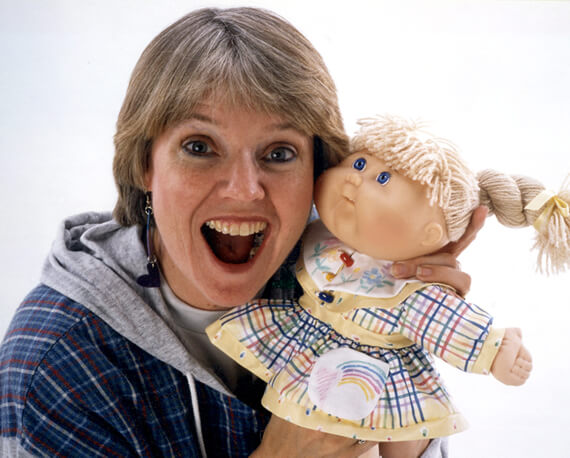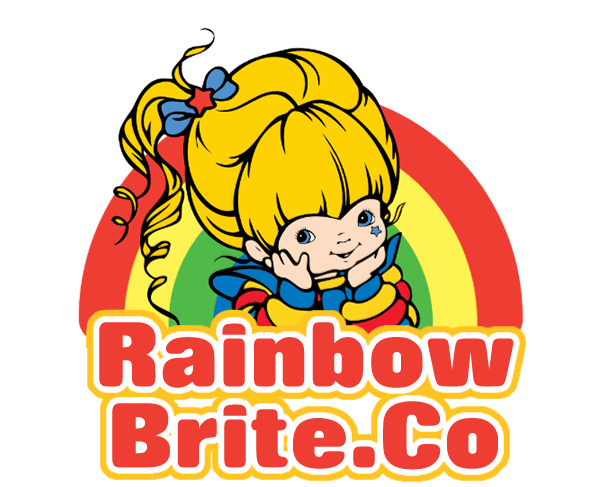 Stefanie Eskander is a toy designer who was in the Mattel Design Team: “Large & Small Doll Group” from 1985 to 1986 and was one of those responsible for the Rainbow Brite Dress Up Doll line
Stefanie Eskander is a toy designer who was in the Mattel Design Team: “Large & Small Doll Group” from 1985 to 1986 and was one of those responsible for the Rainbow Brite Dress Up Doll line
Today she is a designer for Spin Master, Inc. designing for the Liv line of dolls.
With 25 years of designing experience, and having designed one of the Rainbow Brite fan favorite dolls “Moonglow”, it is a great pleasure to learn more about how the industry works from a woman who was there from the beginning.
Click here to read her 2010 interview…
Stefanie Eskander (Mattel Doll Designer) Interview (2010) by RainbowBrite.Co.Uk
How did you come up with Moonglow?
Stefanie Eskander: We were charged with coming up with some new colors & characters to extend the line, and I thought a light colored, pastel doll would be fabulous… with iridescent colors, and pastel accents.. Originally the doll had white hair! I’ll be no one knows that! But my idea for the white hair (I thought it would look more like moonlight that way) was overridden by our management… they thought the white hair would make her look like an old lady! In retrospect, I think they were right. So, other than the hair color, Moonglow looks just like the prototype.
Being the designer of Moonglow, many fans want to know, how was her name correctly spelled? With or without a “w”?
Stefanie Eskander: Definitely a ‘w’ on Moonglow. Naming toys is a very lengthy & difficult process. All kinds of legal searches & clearances need to be made. The names are trademarked. We often name toys one thing, only later on, before release, discover that the name didn’t clear legal, and we have to re-name it. Recently I was involved in this situation at another company, where we had our packaging all printed with one name, when we discovered another toy company was releasing something with a similar name. We changed it, even though it wasn’t identical.
Did you develop any of the character’s back story or design outside of the doll?
Stefanie Eskander: I’ve noticed that there are many toy lovers of all types who have really gotten into the stories & characters of various toys. As toy designers, we often don’t know or didn’t follow all the various media versions of our toys. We were too busy designing and trying to come up with unique ideas and innovative product. I rarely watched any of the animated series based on our toys, and honestly, don’t really know or care much about the minute of the characters: why one version of a doll had a pink colored belt, and another version had a silver. Most often the discrepancies in toys are based on mundane production issues: cost, availability of material, etc.
Do you have any sketches of the doll?
Stefanie Eskander: I WISH I had sketches. One of the things about the toy industry is that it is very secretive, for good reason. We are obligated to keep our trade secrets, and other details to ourselves, because of the very real danger of having the information leak to our competitors. Because of this, when a person leaves one toy company to go to another, they are pretty much escorted right out the door. There is no ‘two weeks notice’ in the toy biz. For that reason, each time I left one toy company (with the exception of going from Fisher-Price back to Mattel- since Mattel now owned FP) there was no time to get sketches. In fact, it was highly frowned upon to take anything out the door when you left. I do have a few random drawings I did through the years, but I never used them in any way except to put them in my portfolio after a certain length of time passed to avoid any confidentiality issues. One toy I designed that was for awhile, quite a collector’s item was the Jem Pet Llama. I have my original sketches, and some early engineering models. Then, a few years ago, a cache of these llamas was found somewhere, and now they aren’t very collectible anymore. Oh well, how fleeting is fame!
Did you hand make your prototypes or did you sketch and someone else make them?
Stefanie Eskander: We have our own sample-makers at Mattel. Sample-makers are seamstresses who sew the samples we design. Designers don’t usually sew their own samples, it’s a better use of time & resources for the sample-makers to do it for us. So, I would give the sample-maker color drawings, and probably swatches of fabric, and they would make it exactly as I drew it. Mattel also has their own rooters, who root the doll hair. Since we were working with yarn, it was a bit different, but as I recall, the rooters also sewed the yarn hair for our prototypes. Since we also designed the doll faces, our face design department would paint the doll heads to our specs. Since we were using existing head molds for RB, I didn’t need to start from scratch on heads. Our prototypes looked almost exactly like the production dolls. The only thing I can remember that was different, was the holographic glitter label on the belt of the outfit was sticky-back on the sample, and in production, it was sewn on. And as I mentioned before, my original design had white hair. When the prototype was made it had the peach colored hair Sample-makers are very clever in how they construct the dolls, clothing, bodies, etc. Reinforcement is totally normal, sometimes by the time a product gets into production, we have to eliminate some of these quality touches for cost reasons.
Thank you to Mrs Eskander for her insight in to what went on Behind the Scenes at Mattel, and we look forward to speaking to you again in the future!
Images courtesy of Mrs. Eskander
Interview Content © 2010 RainbowBrite.Co/.Co.Uk./.Us

